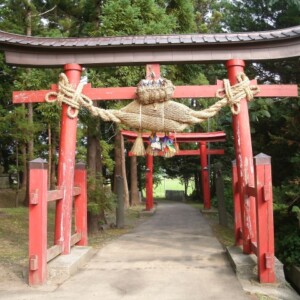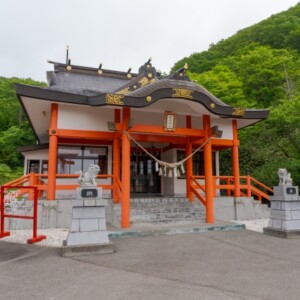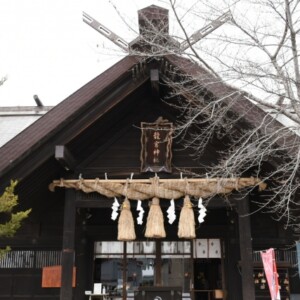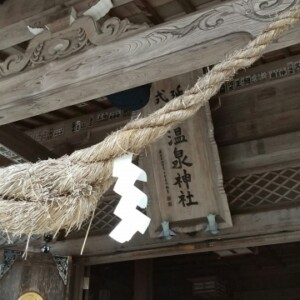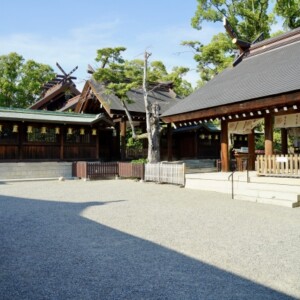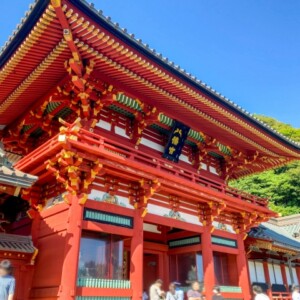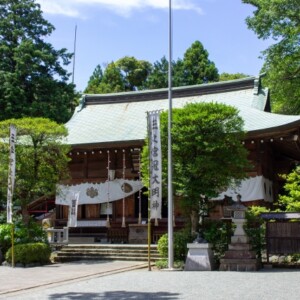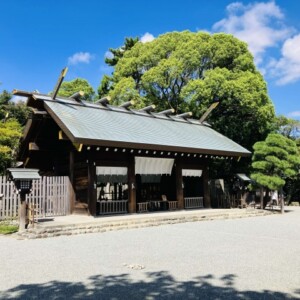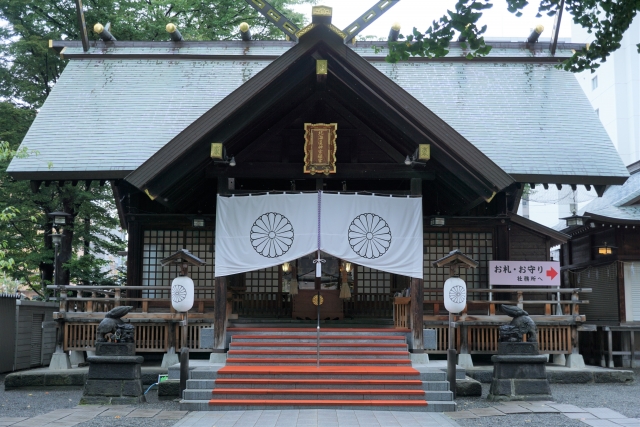
Hokkaido Jingu Tongu|Complete guide to the history, highlights, and worship information of this historic shrine for the citizens of Sapporo
Hokkaido Jingu Tongu, located in the city of Sapporo, is a historic shrine built in 1878. It is nicknamed “Tongu-san” (meaning “the shrine of Tongu” in Japanese) and is visited by many worshippers as a power spot for praying for the fulfillment of love and for the birth of a child. The shrine also plays an important role as an excursion spot for the Sapporo Festival, and visitors are welcomed by the oldest guardian dogs in Sapporo and a beautiful ginkgo tree on the shrine grounds.
Hokkaido Jingu Tongu Overview and Basic Information
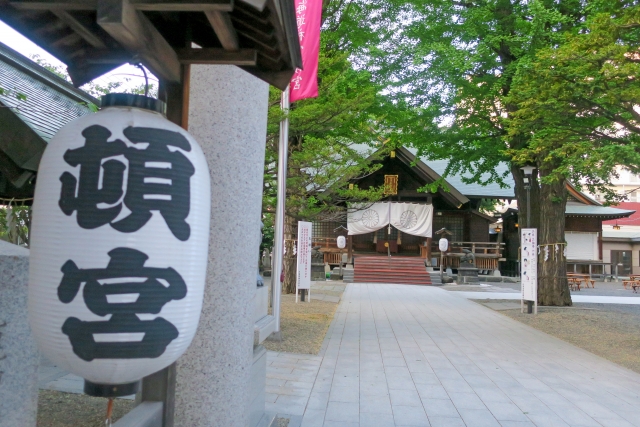
Hokkaido Jingu Tongu is located at Minami 2-jo Higashi 3-chome, Chuo-ku, Sapporo, and is a branch shrine of Hokkaido Jingu Shrine. The name “Tongu” means “temporary shrine” or “temporary palace,” and it serves as a resting place for the portable shrine during the annual Hokkaido Jingu Festival in June. Located within easy access from the center of Sapporo, the shrine has long been worshipped by local residents.
History and Origin
The history of Hokkaido Jingu Tonmiya dates back to the 4th year of Meiji (1871), when Sapporo Shrine (present-day Hokkaido Jingu Shrine), which was located in Maruyama, was established in June 1878 at Minami 2-jo Higashi 3-chome, donated by Nakagawa Genzaemon, as Sapporo Shrine’s far worshiping place in the form of a Shinto Chukyoin and Shinto Office Branch Office. The shrine was established in June 1878 as Sapporo Jinja Haruhojo.
At that time, Hokkaido was still in the early stages of development, and the transportation infrastructure was inadequate. In winter, when snowfall increased, it was difficult for priests and worshippers to get to Sapporo Shrine. Haruhaisho, a place for worshipping the gods from a distance, was revered by all 800 households of Sapporo citizens.
For 16 years from 1881 to 1900, the affairs of the Sapporo Shrine office were conducted at this far-off place, and only festivals were held at the head office in Maruyama. During the Taisho Period (1912-1926), the number of people who made Hatsumode at Tongu Shrine was sometimes ten times that of Hokkaido Jingu Shrine, indicating how close the shrine was to the people of Sapporo.
The shrine was destroyed by fire on September 1, 1901, but in 1911, the Sapporo Festival Ward, represented by Keisuke Otake, Teijiro Sukekawa, and Dojiro Sumi, applied for the sale of old materials from the Sapporo Shrine worship hall built in 1878, and began construction of the shrine building as a portable shrine for the head shrine procession on November 17, 1911. On November 17, 1908, the shrine was named Tongu and dedicated to Sapporo Shrine by the Sapporo Festival District.
In 1947, a branch spirit of Sapporo Shrine was dedicated to the shrine, and the shrine became a subordinate shrine. In 1964, the head office was renamed Hokkaido Jingu Shrine, and the shrine became the current “Hokkaido Jingu Tongu”.
Deities and Benefits
Like the head shrine, there are four deities enshrined at Hokkaido Jingu Tongu. The four deities enshrined at the shrine are Okunitama no Kami, Onamuchi no Kami, Sunahikona no Kami, and Emperor Meiji.
Ohokunitama-gami, also called “Okuninushi God,” is the deity who is said to have created the earthly world in Japanese mythology, and is said to be the god of pioneering and land management. Onamusa is said to have cooperated with Okunitama in the creation of the land, and is said to be the god of medicine and sake brewing, in addition to pioneering and managing the land. Shohikonokami is known as the god of land management, medicine, and sake brewing, and Emperor Meiji was the 122nd emperor of Japan who promoted the development of Hokkaido.
These deities are said to bring blessings such as good luck, exorcism, healing of illness, traffic safety, business prosperity, family safety, academic success, fulfillment of various wishes, longevity, love, good marriage, marital bliss, and improvement in the arts. The shrine is especially famous as a power spot for prayers for match-making, fulfillment of love, and the birth of a child, and the legend associated with the guardian dogs on the shrine grounds attracts many visitors.
Highlights and Characteristics of the Hokkaido Jingu Tongu
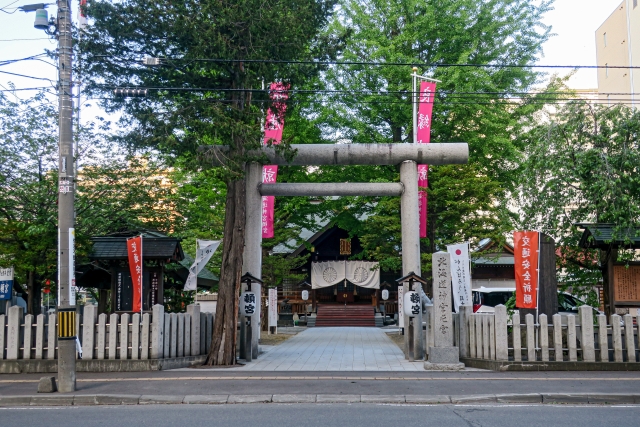
Hokkaido Jingu Tongu is a compact shrine with many attractions. From buildings of great historical value, to the oldest guardian dogs in Sapporo, to the beautiful nature that colors the four seasons, the shrine offers a variety of attractions to visitors.
Architectural and Structural Attractions
The current shrine pavilions of the Hokkaido Jingu Tongu were built in 1910, when the old worship pavilions of the Sapporo Shrine were disposed of. Since the current shrine pavilions of Hokkaido Jingu Shrine were rebuilt in 1978, the pavilions of Tongu, which is actually the last shrine, are about 70 years older than the pavilions of Hokkaido Jingu Shrine, and the use of old timbers makes the building a reminder of the Sapporo Shrine when it was first built.
This fact is very interesting, and the Tonmiya shrine pavilion is a valuable structure that tells the history of Hokkaido Jingu. The shrine pavilions, which incorporate the skills and aesthetics of Meiji-era craftsmen, have a simple yet dignified appearance. The curves of the roof of the worship hall and the beauty of the woodwork give visitors a sense of tranquility and solemnity.
A Kaguraden (Shinto music and dance hall) is also located on the shrine grounds, where bean-throwing events are held during the Setsubun Festival. In 2023, a beautiful portable shrine weighing approximately 2 tons will be dedicated, making it the second largest in Hokkaido after the portable shrine at Tomioka Hachiman Shrine, the largest in Japan. It is usually housed in the building to the left of the worship hall and can be viewed through a lattice.
The oldest guardian dogs and stone lanterns in Sapporo
The Izumo-shaped guardian dogs made of Sapporo soft stone are the oldest in Sapporo. The stone lantern is said to be the oldest in Hokkaido.
One of the main attractions of the Hokkaido Jingu Tongu is the two pairs of guardian dogs enshrined in the precincts of the shrine. The guardian dogs in front of the shrine were dedicated in 1890 and are made of Sapporo soft stone. They are beautifully carved and dynamic, and look as if they are alive.
The guardian dogs in front of the hall of worship have a lion cub carved at their feet (left side), and are widely known to bring good luck for children and easy childbirth. On the other hand, the guardian dogs in front of the torii gate were created in the Heisei era and are said to bring good luck in marriage.
It is said that if you pray after petting the pair of guardian dogs that greet you as soon as you enter the torii gate, you will receive blessings for a good marriage and fulfillment of your love. Many worshippers are seen on a daily basis touching the komainu and making wishes, and as a result, the surface of the komainu has been polished by the hands of many people, giving them a beautiful luster.
One pair of stone lanterns, located in the back of the shrine grounds between the shrine pavilion and the portable shrine building, has the date of erection inscribed on it. The other pair of stone lanterns are of an elaborate workmanship that is rare in the city. A lion or a guardian dog? The other pair of stone lanterns are also rare in the city, with a lion or a guardian dog on the pedestal and a dragon carved on the pole. These stone lanterns are a valuable legacy of Tongu, which used to have more worshippers than the main shrine.
Nature and sacred trees in the precincts
Although located in an urban area, the precincts of Hokkaido Jingu Tongu are a space where visitors can enjoy the natural beauty of the four seasons. The sacred tree of Hokkaido Jingu Shrine is a ginkgo tree that stands on both sides of the approach to the shrine. Visitors can enjoy the power of the trees by touching them, and in the fall, the beautiful autumn colors of the trees delight the eyes of worshippers.
In spring, cherry blossoms bloom on the temple grounds, and in fall, the ginkgo trees turn golden. The rows of ginkgo trees in autumn are especially magnificent, creating a beautiful scene as if a yellow carpet were laid out along the approach to the shrine. This ginkgo sacred tree is a precious object that visitors can touch directly and feel the power of nature.
In winter, the quiet precincts covered with snow create a different kind of beauty. The combination of the snow-covered shrine pavilions and the guardian dogs creates a sacred atmosphere unique to Hokkaido and leaves a deep impression on many visitors.
Guide to Worship and Visiting the Shrine
Worship at Hokkaido Jingu Tongu can be a profound experience if proper manners and etiquette are observed. The shrine also holds special significance during the Sapporo Festival, and various festivals and events are held throughout the year.
Worship Etiquette and Manners
Visiting the shrine is in accordance with general shrine etiquette. After entering the shrine grounds, bow in front of the torii gate and proceed quietly along the approach to the shrine. The center of the path is considered the path of the gods, so walk near the edge of the path.
At the hand-watering basin, first purify your left hand, then your right hand, and rinse your mouth to cleanse yourself. When you stand in front of the offering box, bow lightly and place your offering in the box. Afterwards, bow lightly and then leave the building.
The manner in which you touch the komainu (stone guardian dogs) is also important, especially at the Hokkaido Jingu Tongu shrine. The guardian dogs in front of the torii gate are believed to bring good luck in the attainment of love, while those in front of the hall of worship are believed to bring good luck in the birth of a child.
Sapporo Festival and its Role as a Gorabisho
One of the most important roles of the Hokkaido Jingu Tongu is its function as an Otabisho during the Hokkaido Jingu Festival (Sapporo Matsuri) held annually from June 14 to 16. Four palanquins and nine floats are paraded through the city by about 1,000 people to pray for the well-being of the citizens of Sapporo.
The route of the portable shrine procession starts from Hokkaido Jingu Shrine, passes near Sapporo Station, and arrives at Tongu near the Hokkaido Prefectural Government Office. The portable shrine is then transported to the Odori Park area, where a palanquin ceremony is held. The procession then returns to Hokkaido Jingu Shrine via Odori Park.
The history of the Sapporo Festival dates back to 1878. In the beginning, the “floats” were carried out by Susukino geiko and Narimono-sha on two dancing stages for the procession. Around 1887, the floats were decorated with larger and more gorgeous decorations.
Setsubun Festival is another important annual event in the precincts of Tongu. The Setsubun Festival is held prior to Risshun (the first day of spring) to pray for the return of spring after the long winter and to purify all bad things. At around 5:30 p.m., a bean-throwing ceremony is held in the Kaguraden Hall by Hokkaido Shrine officials, and many worshippers gather for the lucky beans.
Red Seal and Good Luck Charm Information
Visitors can obtain red seals at the shrine office. The red seal is stamped with the distinctive red seal of a guardian dog, which is a unique souvenir of this shrine. The design associated with the komainu is appreciated by many visitors as a symbol for the fulfillment of love and prayers for the birth of a child.
Amulets and awards are available for various prayers. Especially popular are charms for love fulfillment, marriage, childbirth, and safe delivery, many of which are associated with the blessings of komainu (guardian dogs). For details on the types and initial fees, please check at the shrine office when you visit the shrine.
In addition, a storage place for old votive tablets has been set up in the precincts of the shrine, and they can be returned even during commuting hours. Items that can be accepted for donation are those from the shrine, such as votive cards, amulets, sacred arrows, shimenawa, omikuji, kamidana, pine decorations, etc. Dolls, Buddhist ritual utensils, daily necessities, etc. are not accepted.
Access/Use Information
Hokkaido Jingu Tongu is located in the Sosegawa East area of Chuo-ku, Sapporo, and is very accessible from the city center. The location is accessible to both tourists and locals, both by public transportation and by private vehicles.
Transportation Access
The most convenient access is via Bus Center-mae Station on the Subway Tozai Line, which is only about a 2-minute walk from Exit 6, making it very accessible. It is also about a 12-minute walk from Odori Subway Station and about a 12-minute walk from the Nishi 4-chome stop of the Sapporo City Tram.
It is a 10-minute walk from the Sapporo TV Tower and within walking distance of the Clock Tower and other tourist attractions, making it an easy location for tourists to visit. It is also close to Nijo Market, making it possible to visit the shrine in conjunction with sightseeing in central Sapporo.
From JR Sapporo Station, take the Namboku Subway Line to Odori Station, transfer to the Tozai Line, and get off at Bus Center Mae Station. From New Chitose Airport, take the JR Rapid Airport to Sapporo Station in about 40 minutes, and from there it takes about one hour by subway.
Hours of Admission, Fees, and Parking Information
Hours of worship at Hokkaido Jingu Tongu vary depending on the season. During the summer season (check for specific dates), the shrine is open from 9:00 am to 5:00 pm, and during the winter season, from 9:00 am to 4:00 pm. Admission is free, and everyone is welcome to visit the shrine.
Parking space is available for about 7-8 cars. However, due to the limited number of spaces available, please use the nearest coin-operated parking lot if the lot is full. We recommend using public transportation, especially during the Sapporo Festival and New Year’s holidays when crowds are expected.
If you wish to pray, reservations by phone are recommended in advance. Especially for Shichi-Go-San pilgrimages (September to November), reservations are required to avoid congestion, and a maximum of four couples may pray at the same time. Prayers are held every 30 minutes from 9:00 am to 4:00 pm.
Hours are from 9:00 a.m. to 5:00 p.m. in summer and from 9:00 a.m. to 4:00 p.m. in winter.
<Address> 3-10, Minami 2-jo Higashi, Chuo-ku, Sapporo, Hokkaido 060-0052, Japan
Reference site
Hokkaido Jingu Tongu official website: https://tongusan.jp/



